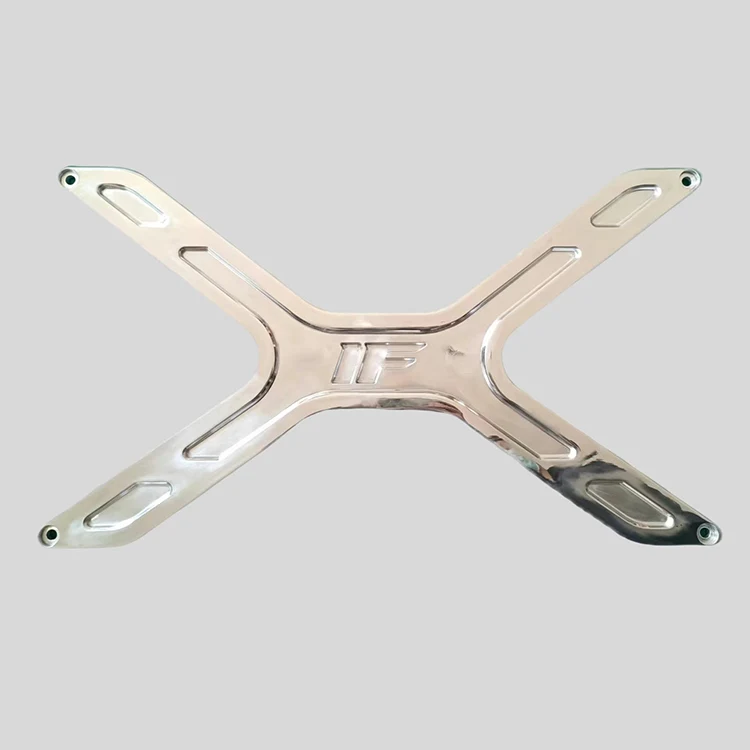What Surface Finishes Are Possible with CNC Precision Machined Parts?
2025-11-12
CNC Machining Part production involves not only dimensional accuracy but also the quality of surface finishes. In industrial applications, surface treatment determines both the performance and appearance of components. At Qingdao Uet Machinery Co.,Ltd., our factory provides various surface finishing options to meet the needs of clients across automotive, aerospace, and electronics industries. Understanding what finishes are available can help customers choose the right treatment for their specific function and cost target.
Importance of Surface Finishing in CNC Machining
Surface finishing enhances corrosion resistance, wear resistance, and appearance of the CNC machined components. It can also improve the assembly tolerance, reduce friction, and extend part lifespan. Our engineers analyze each CNC Machining Part before recommending a finishing method to ensure the best balance between precision, protection, and aesthetics. In our factory, we focus on consistency and repeatability in every production batch, ensuring our customers receive parts that meet international quality standards.
Main Types of Surface Finishes for CNC Precision Machined Parts
There are several surface finish types commonly used in the production of CNC Machining Part components. Each finish serves a specific function depending on whether the part is designed for mechanical strength, electrical conductivity, or visual appearance. The following are among the most popular options used in our factory’s production lines:
- Anodizing: A controlled oxidation process primarily for aluminum alloys, improving corrosion resistance and hardness while allowing for decorative color finishes.
- Polishing: Used to reduce surface roughness and create a mirror-like appearance suitable for optical or display applications.
- Sandblasting: A mechanical treatment that produces a matte or satin texture, hiding machining marks and providing a uniform look.
- Powder Coating: Creates a durable and uniform protective layer resistant to impact and chemicals, suitable for both indoor and outdoor applications.
- Electroplating: Adds a thin metal layer (such as nickel, chrome, or zinc) to enhance corrosion resistance and electrical conductivity.
- Brushing: Produces linear surface patterns for aesthetic appeal, often applied to stainless steel or aluminum parts.
- Passivation: A chemical treatment mainly for stainless steel to remove impurities and enhance oxidation resistance.
- Black Oxide: Provides a protective layer against corrosion while minimizing light reflection, widely used in tools and precision devices.
Our Product Parameters and Technical Capabilities
Qingdao Uet Machinery Co., Ltd. offers CNC precision machining services with a wide range of material and surface treatment capabilities. Our factory is equipped with multi-axis CNC machines, precision grinders, and finishing equipment to ensure the highest surface quality. Below is a summary of our main technical parameters and finishing options:
| Product Type | CNC Machining Part |
| Available Materials | Aluminum, Stainless Steel, Carbon Steel, Brass, Copper, Titanium |
| Machining Tolerance | ±0.005 mm |
| Surface Finish Options | Anodizing, Polishing, Sandblasting, Powder Coating, Electroplating, Brushing, Passivation, Black Oxide |
| Surface Roughness Range | Ra 0.2 – 3.2 µm |
| Maximum Part Size | 1500 mm × 800 mm × 600 mm |
| Batch Capability | Prototypes to mass production |
| Inspection Equipment | CMM, surface roughness tester, hardness tester |
| Certification | ISO 9001, ISO 14001, RoHS |
How Surface Finish Affects Product Performance
The choice of surface finish directly influences the performance of CNC precision machined parts. For instance, anodizing increases corrosion resistance by more than five times compared with untreated aluminum. Polishing and brushing, while mostly aesthetic, can also reduce debris accumulation and friction in motion systems. Electroplating improves electrical conductivity, making it suitable for connectors and electronic housings. Our factory technicians evaluate each project’s environment, mechanical load, and functional requirements before selecting a finish. This ensures that every CNC machining part from Qingdao Uet Machinery Co., Ltd. meets the customer’s specific operational needs.
Our Quality Control Process
At Qingdao Uet Machinery Co.,Ltd., every CNC Machining Part undergoes strict inspection during and after finishing. Our quality control department uses advanced instruments to measure surface roughness, coating thickness, and adhesion strength. We provide test reports for every order, giving our customers full transparency on production quality. Our professional team constantly monitors process stability and updates our factory standards to keep pace with international machining trends.
Conclusion
Understanding what surface finishes are possible with CNC precision machined parts is crucial for selecting the right combination of performance, cost, and durability. With advanced technology, experienced engineers, and a strong commitment to quality, Qingdao Uet Machinery Co., Ltd. delivers precision parts that meet the most demanding requirements. Whether your project needs anodized aluminum components, polished stainless steel housings, or nickel-plated connectors, our factory provides a one-stop solution for all your CNC machining and finishing needs.
FAQ about What Surface Finishes Are Possible with CNC Precision Machined Parts?
Q1: What are the most common surface finishes for CNC machined parts?
A1: The most common finishes include anodizing, polishing, sandblasting, powder coating, electroplating, and passivation. Each offers unique benefits depending on the material and application.
Q2: How do I choose the right surface finish for my CNC machined components?
A2: The selection depends on the part’s function, environment, and aesthetic requirement. Our engineers at Qingdao Uet Machinery Co.,Ltd. evaluate each factor to recommend the most suitable finish for your project.
Q3: Does surface finishing affect dimensional tolerance?
A3: Yes, certain finishes like powder coating or plating may slightly change part dimensions. Our factory compensates for this during machining to maintain precise tolerances while ensuring surface protection.



